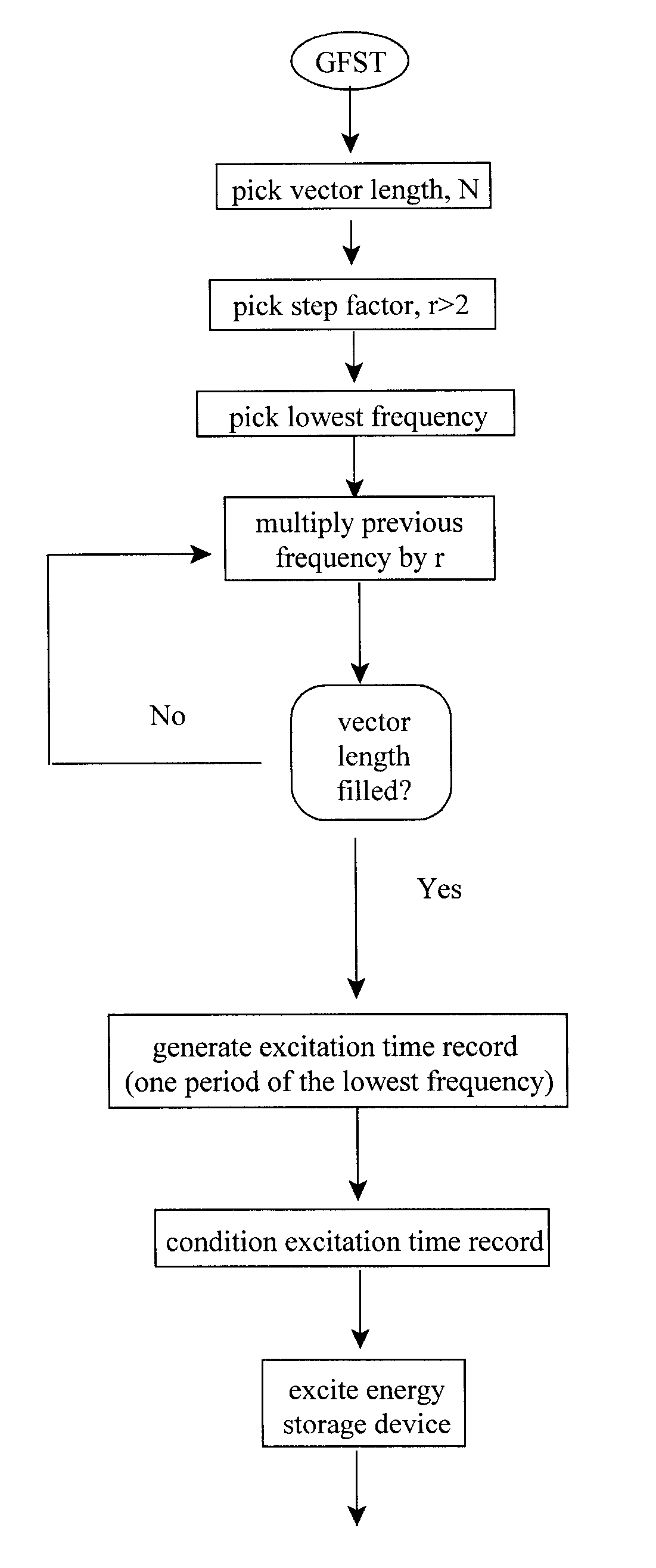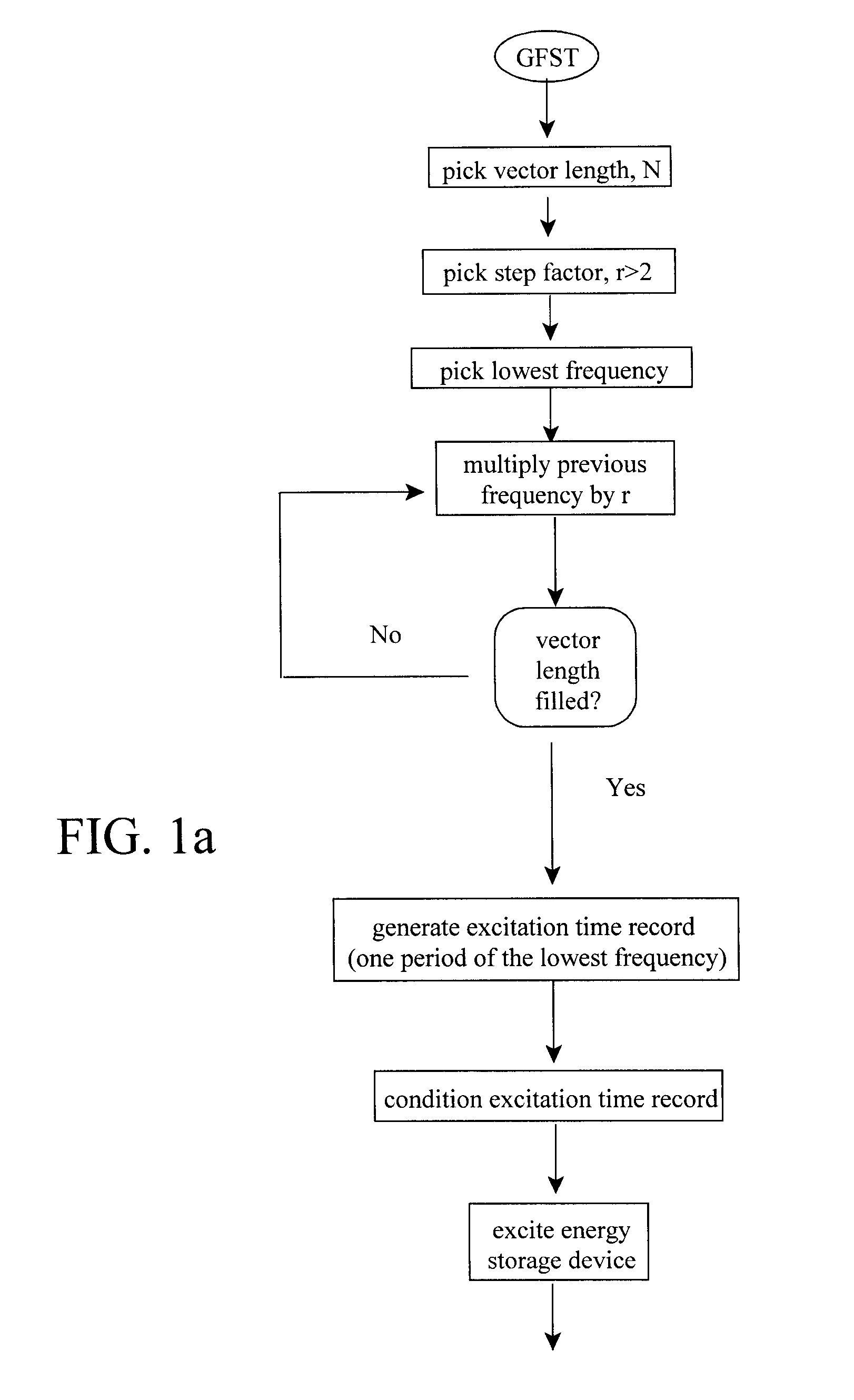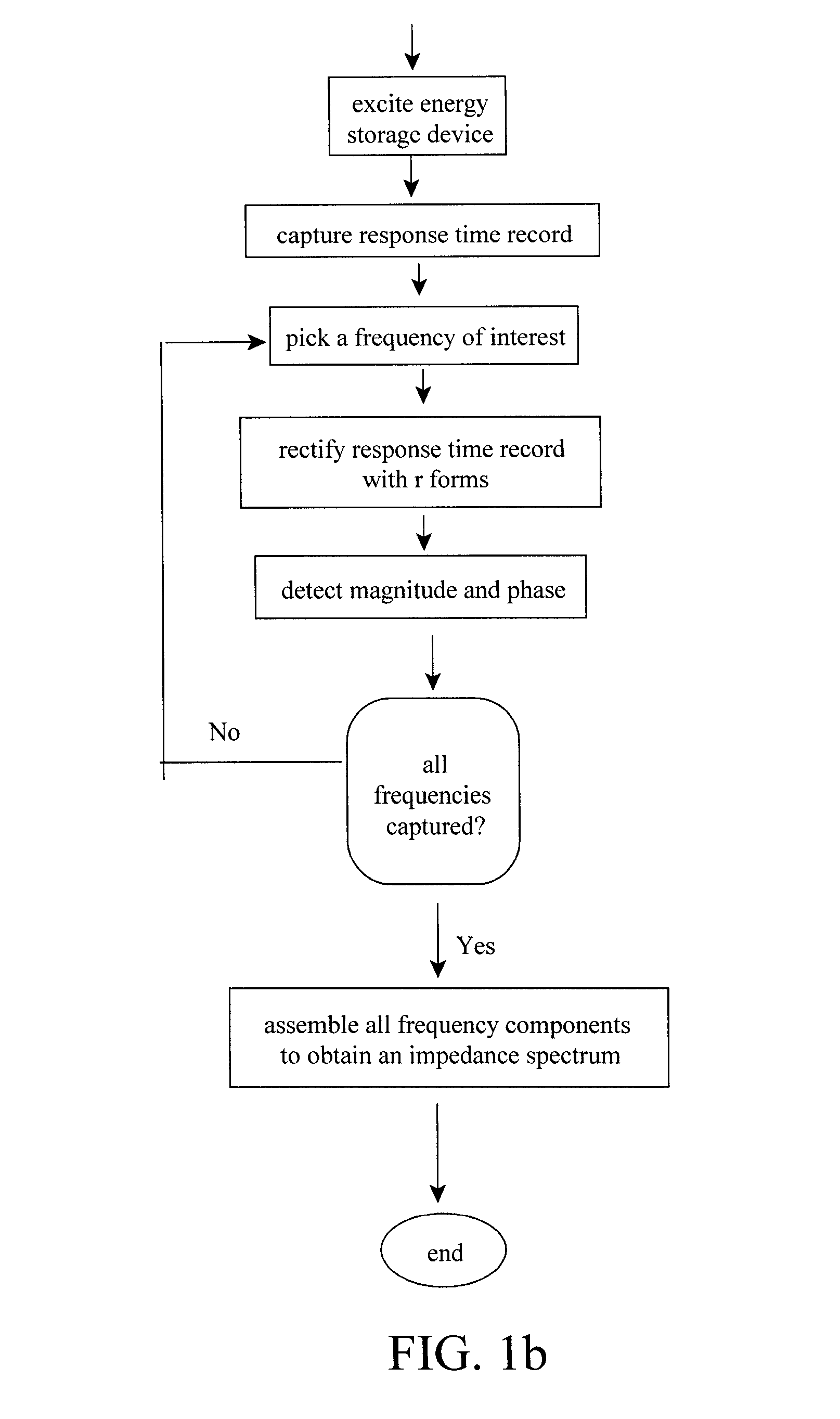Method of Detecting System Function by Measuring Frequency Response
a technology of frequency response and system function, applied in the direction of pulse characteristics measurement, instruments, testing circuits, etc., can solve the problems of time-consuming and expensive laboratory equipmen
- Summary
- Abstract
- Description
- Claims
- Application Information
AI Technical Summary
Benefits of technology
Problems solved by technology
Method used
Image
Examples
Embodiment Construction
[0014]The method of the subject invention allows for rapid measurement of the impedance for energy storage devices. It has been shown that the shifts in the impedance spectra as a function of time and use strongly correlates to the health of, for example, battery technologies (Christophersen, 2002). Therefore, the subject method provides information about energy storage devices that is critical for onboard diagnostics and state-of-health estimation. The subject method measures the frequency response of an ESD (e.g., a battery) by exciting it with a SOS signal consisting of a number of select frequencies, and then capturing a response time record. The data are processed to obtain the impedance at each frequency in interest.
[0015]The desired frequencies are assembled as an excitation time record that can consist of a sum-of-sines signal with a length of, at most, one period of the lowest frequency. The response signal must be measured at a time step that is compatible with Shannon's s...
PUM
 Login to View More
Login to View More Abstract
Description
Claims
Application Information
 Login to View More
Login to View More - R&D
- Intellectual Property
- Life Sciences
- Materials
- Tech Scout
- Unparalleled Data Quality
- Higher Quality Content
- 60% Fewer Hallucinations
Browse by: Latest US Patents, China's latest patents, Technical Efficacy Thesaurus, Application Domain, Technology Topic, Popular Technical Reports.
© 2025 PatSnap. All rights reserved.Legal|Privacy policy|Modern Slavery Act Transparency Statement|Sitemap|About US| Contact US: help@patsnap.com



